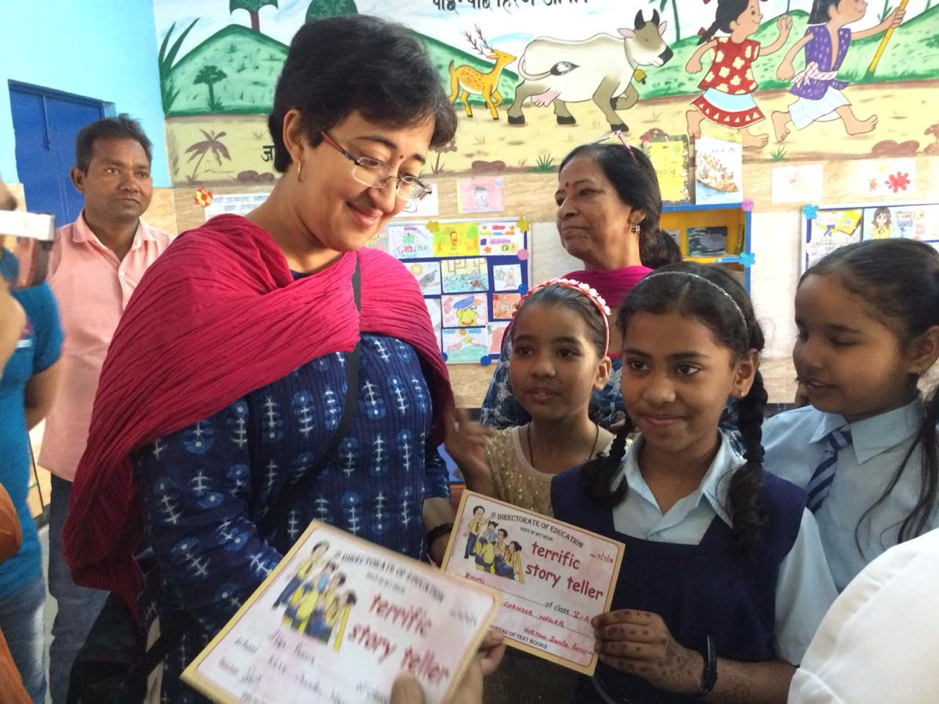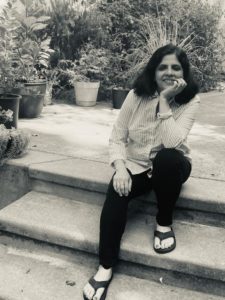To the poems and stories that never got written, to the paintings that never got a canvas, to the
scientific inventions that could have been, to the better and more practical solutions to problems
that the world lost out on, all because, for centuries, women never got a chance. We are lucky to
be born in an age where the world is finally waking up to the idea of giving women a level
playing field. It’s their time to rise and shine.
In honor of the International Women’s Day 2022 we celebrate women who have chosen
creative paths to achieve success in various fields.
Atishi Marlena (Education/Policy Making)
Creating with Empathy

Atishi is the name that is synonymous with the wonderful transformation that the Delhi
government schools have been witnessing in the recent years. One of the pathbreaking
initiatives under this transformation is the “Happiness Program” which was in news recently
when Melania Trump visited a Delhi school and attended a happiness class. The happiness
curriculum is designed to give a child more holistic education and shape his/her personality by
practicing mindfulness, harnessing emotions, and understanding the importance of moral
values.
In a country where government school education is looked down upon and is often thought of as
beyond redemption, understanding the stresses of and the gaps in the current system; and
coming up with a beautiful concept to shape young minds definitely required a feminine touch
and lots of concern.
Designing of the program required stepping into the students’ shoes, imagining how they lived
their lives and what they felt. Empathy is an important trigger of creativity that helps unmask
latent needs and come up with more sensitive and effective solutions.
Sneha Khanwalkar (Music)
The power of mindful observation

Sneha Khanwalkar is one of the very few female composers who have managed to make a dent
in the male dominated Hindi film music scene. In an article, music and film critic Sankhyan
Ghosh writes, “With the explosive, entertaining albums of Gangs of Wasseypur (2012) part I and
II, Sneha Khanwalkar generated what was perhaps the last shake-up in Hindi film music. It was
the last time since Amit Trivedi’s Dev D (2009), and before that, AR Rahman’s Roja (1992), that
we had felt the shock of the news of having never heard anything like that before”.
The same article mentions how her USP is combining rustic folk with techno and how it started
out as an act of rebellion against the pure classical influences that she grew up with.
Sneha’s debut album as a composer in Hindi films was Oye Lucky Lucky Oye. She traveled
across Punjab and Haryana in search of folk songs and suitable voices that would fit her vision;
as she did for her GOW albums when she traveled to Bihar. She refuses to call this exercise
research and says “…(it is) going there and being in the now, being present when those things
are happening.” To observe deliberately with a purpose of finding something is what mindful
observation means. It also means being one with what you observe and immersing yourself
totally into it. It is often through mindful observations that inspiration strikes and we often hit
upon the best idea or the best solution for a problem.
Chitra Banerjee Divakaruni (Writing)
A fresh perspective

Mahabharata – a mythological saga that has been told and retold over centuries. The narrative
may have evolved over the years, and the story told through many mediums, yet the basic plot
remains the same — the story of good over evil, the story of standing up for one’s rights, the
story of love, loss & retribution. If someone asked you who the protagonist of the story is you
would probably say The Pandavas and Kauravas, or Arjun, or maybe Krishna.
And then came Chitra Banerjee with her novel “The Palace of Illusions”- her interpretation of
Mahabharata. She turned the story upside down and narrated it from the point of view of
Draupadi, the female character who is pivotal for the biggest twist in the tale, yet remains a
passive character. So, what would it be like to get into the mind of this woman and see the epic
rollout from her perspective?
The Palace of Illusions remains a best seller even after 10 years of its publishing.
“Everything that can be invented has been invented”, the Commissioner of US patent office in
1899 said infamously. Well even if it were true, there is always a way to reinvent something. All
we have to do is look at it from a new perspective!
Kaushiki Chakraborty/Sakhi Band (Music/Performing Arts)
The power of collaboration

Driven by a strong desire to promote Indian classical music to the youth, as well as to help
women claim their rightful position on the Indian music stage Kaushiki Chakraborty, one of the
finest Hindustani classical vocalists that we have today, formed Sakhi- an all-woman ensemble
of female artists, in 2015.
Besides Kaushiki as the vocalist, the band includes Shaoni Talwalkar on the tabla, Mahima
Upadhyay on pakhawaj, Debopriya Chatterjee on flute, Nandini Shankar on the violin, and
Bhakti Deshpande, who performs Kathak. The concept of a Hindustani classical band was novel
to start with and having all women members made a strong statement.
Sakhi was able to enhance the audience experience by showcasing so many artists together as
well as by adding a visual appeal to the performance by Kathak. The short pieces of 10–12
minutes duration gives the audience a chance to experience a range of classical forms and
caters to the preference of the youth with shorter attention spans.
Sometimes, for a creative concept to be realized, a lot of people need to join hands and
collaborate. By bringing complementary skills to the table they enhance the final product. More
people also mean more ideas, more perspectives, and also being able to get multiple reviews
and critiques for a prototype even before it is ready to be tested.
The women scientists of ISRO/Mangalyaan (Science)
Working with constraints

Jugaad — a unique Indian word which is hard to translate to English. Among other things it
means to make do with limited resources. And the biggest jugaad-inspired success story of
recent times in India has to be the success of its Mars Orbiter Mission when ISRO successfully
launched its Mars orbiter at about 1/10th the cost of a similar mission at NASA.
Women were at the forefront of this mission in particular and were rightfully put in the limelight
after this feat. A picture of the women scientists congratulating each other went viral on social
media after the launch. The film Mission Mangal showcased the work of these scientists and
highlighted the constraints they worked under. But the resources crunch at ISRO during the
Mars mission wasn’t the only constraint the women in the team had faced in their lives.
Ritu Karidhal, Deputy Operations Director, MOM recalls in an interview- “At the time, my son
was 11 and my daughter was five. We had to multitask, manage time better… Even when I was
exhausted at work, I’d go home and see my children and spend time with them.”
Minal Rohit, project manager on MOM and mother of a six-year-old boy, had a unique approach
to balancing work and family life. “We think of our satellites and payloads as our babies, too,”
she says. “To us, they have lives. So the rules for office and home are common: Patience,
Procedures, Priorities.”
Constraints like limited resources and time etc. can appear to be impediments for creativity
because creativity is supposed to be about free imagination, unlimited ideas, working
outside-the-box. But it is well known that while at the ideation stage divergent thinking is the
best way forward, creative execution requires convergent and focused thinking.
Conclusion
What runs as a common thread in these examples is women achieving success by embracing
independence, strength, assertiveness, and leadership- traits that are commonly ascribed to
being masculine in addition to traits that are traditionally considered feminine- sensitivity,
collaboration, expressiveness, nurturing. The bottom line is that the yin and yang of creativity
resides within us all but it is for us to find the right balance for our creative success.
“A woman is human.
She is not better, wiser, stronger, more intelligent, more creative, or more responsible than a
man.
Likewise, she is never less.
Equality is a given.
A woman is human.”
― Vera Nazarian, The Perpetual Calendar of Inspiration
Visual Content: Amit Abhishek
Editor: Sharmistha Dey

Ashoo Khosla
Author
Ashoo Khosla is the Chief Learning Officer at Shoolini University.
From being passionate about English literature in school to loving physiology and medicine in medical school and then advertising in B school she has been on a quest to satisfy the insatiable appetite for learning. Currently pursuing a doctorate where her research area is creativity,
her learning about life has also happened by being mom to 2 beautiful girls.



